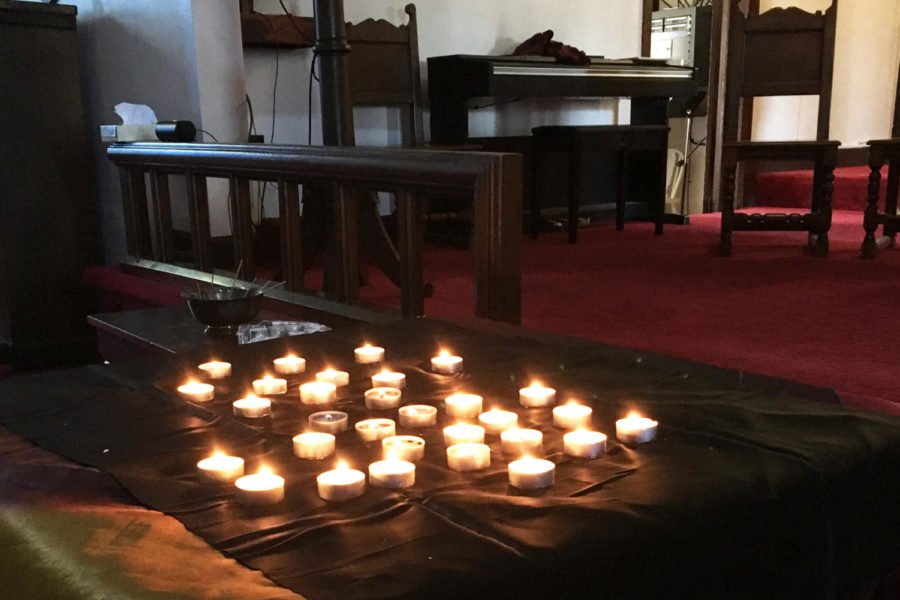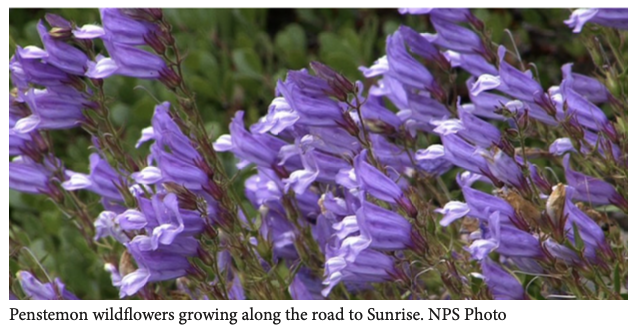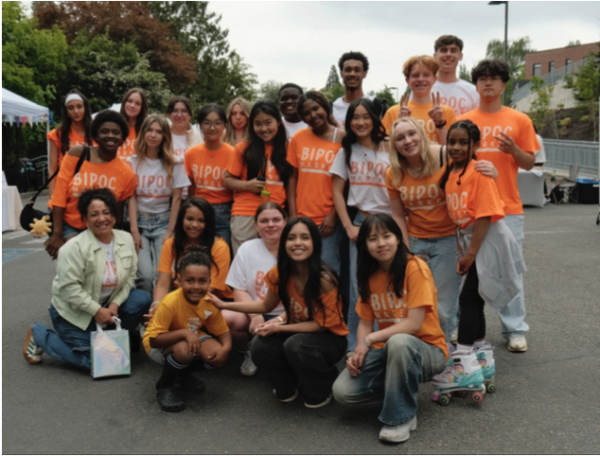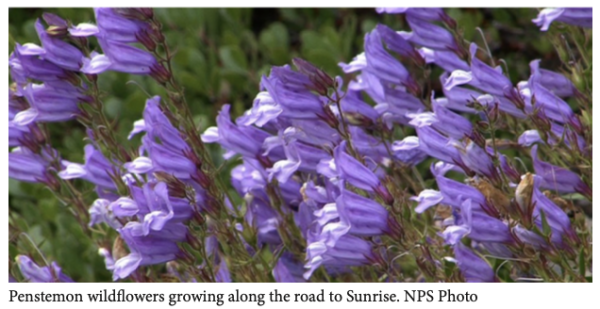Annie Wright community comes together in wake of tragedy
Some students lit candles in the chapel, which was open as a space for mindfulness, reflection and prayer. Photo by Julia Henning.
May 10, 2019
Teachers, administrators, staff, students and families came together last week in response to a tragedy in the Annie Wright Schools community. On Tuesday morning, April 30, a friend of the Brotsky family called to inform the school that Sophie Brotsky, a current freshman, had died by suicide.
Brotsky, from Silverdale, Washington, enrolled in Annie Wright Upper School for Girls last fall. She was active in school life, participating in the school’s theatre program and running on the cross country and track teams.
In response to Brotsky’s death, the school set several initiatives in motion to provide support for students, families, faculty and staff.
Transparency
The school maintained a policy of transparency in informing students about the news. Students were gathered with their peers and informed of Sophie’s death the same morning as the call was received. Director of Upper School for Girls Jake Guadnola emphasized that it was never considered to keep the information private as it was a matter of community, and the family gave consent for the news to be shared. “It was such a tragic moment, and it was also deeply personal to the student and the family, but it was also our community,” he said. “We weren’t going gain anything or protect anybody by not being a hundred percent transparent.”
He also commented on the conversations he had with multiple faculty members about how the news should be told to the student body. “How do we best do this? What’s the right timing? Who were the right groups?” he said. “How do we make sure we are delivering this message to people in the most compassionate way we can? And how do we structure the rest of and the coming days to allow students to work through this in the ways that feel the most authentic to them?” Through discussions with community members Guadnola determined the best course of action for delivering the news.
Counselors
The school provided five counselors to the Annie Wright students and two counselors to the Annie Wright faculty. Charles Wright sent over two of their counselors, Gina Dean and Diana Gerla, on Wednesday. Bellarmine sent one as well, Gary Mayne, who saw both teachers and students on Wednesday. Nancy Waters was a resource for Upper School and Ann Dicks and Breanne Selland were available for Middle & Lower School students. The school offered a counselor to teachers as well, Craig Nelson from the Employee Assistance Program, on Thursday. Students were able to request counseling through an online link, and the school also approached students they believed may be having a hard time but did not take the action to get help. This week counseling services have still been available during the whole school day to assist any students that still need support.
Normalcy
The faculty emphasized how structure was to be maintained for community members who needed normalcy and routine. The normal school schedule was sustained but it was made clear that if structure and routine weren’t what they needed, students could step outside of class to reflect or get support.
Safe Spots
Throughout the week, students were welcome to go to “safe spots” if they were not ready to go back to class. These spots included the Chapel, Great Hall and Learning Center, as well as designated classrooms. Last week more than most, teachers wanted to know where students were and what they were doing, ensuring that they were in one of the safe spots or in a classroom, and not feeling isolated or alone.
The chapel was open as a space for mindfulness, reflection and prayer. There were candles available to light, coloring pages to illustrate, and soft music playing throughout the space. The chapel space stayed available through Friday.
Lighter Workloads & Decreasing Stress
Over the course of the week, the teachers made a concerted effort to decrease the academic stress for students in light of the unusual emotional stress by the direction of Guadnola.
“Moments like these are trying,” Guadnola said. “They are almost impossible emotionally to predict. So, some students respond quickly; they’re sad and then they move on. For other students it is deeply affecting and they don’t know how to make sense of it. Whether they knew the person or did not know the person, it may trigger something and they may find themselves unable to focus and concentrate.”
“The charge to the faculty was for those that want to go, continue running classes; keep an academic opportunity available for those who feel like they want a distraction or they are ready for it…Yet at the same time we have to taper that, so the idea was let’s make sure that there is no academic penalty this week… [Moving forward] we are going to say to kids, ‘If you are unable to do your best work because you are still grappling with this, we are going to get you the support you need,’ and we are going to deal with each student individually.”
Residential Life
Tuesday night after dinner the dorms came together for a meeting. Teachers and administrators were all in attendance as Director of Residential Life Jeff Barber shared advice he received from a counselor at the Bush School in Seattle about how to support our community. Dormers were given many options instead of a normal study hall that night, but students who wished to study were able to do so as well. Many adults were on campus and available for students to talk to. Barber and dorm parent Josh Mitchell hosted some board games in the Great Hall. Dorm parent Charlotte Scott had her door open with snacks, a movie and her cats. Music teacher Jeff Orr came and spent a long time in the dorms with his dog, Marley. The dorms also offered a run to the shops the Point Ruston waterfront complex for those who wanted to get off campus for a few hours.
Social Media
In response to the tragedy, the administration strongly encouraged the student body to refrain from engaging in social media as a mechanism for emotional processing. Since the fall of this year, Annie Wright has been working with Forefront, a suicide prevention center in the Seattle area. At Forefront, they formalized a list of best practices to do when coping with suicide – one of them being to discourage students from engaging their emotional processes on social media.
The reason for this, Guadnola said, is because “It doesn’t do the family any good and it doesn’t do the students engaging in the practice any good, and it really has the potential to get out of control; so the more we can refrain from that, the better it can be for our community.”
So far, the student body has largely been respectful and compliant of the request. “I can’t tell you how proud I am of the student body,” Guadnola said. “It speaks volumes to the character of the student body. It so easily could have been a space where people process the events that matter deeply and emotionally to them, but there was no pushback and there was no criticism.”
LGBTQ Support
On Thursday May 2, Annie Wright Upper School for Girls offered support for LGBTQIA+ students during an afternoon study hall. A representative came from The Rainbow Center and Oasis Center, safe spaces located in Tacoma dedicated to providing resources for LGBTQIA+ people, to talk with students. According to Annie Wright School Counselor Nancy Waters, the representative came to Annie Wright, “To provide information about their services, sign-ups for students, and overall support.”
Support for the Brotsky family
Condolences and well wishes may be dropped off with Guadnola, Dean of Students Annie Green, or Communications Director Jen Willey, or emailed to the communications department at Annie Wright. The school will deliver all of these to the Brotsky family.
Warning signs of suicide
- Talking about wanting to die
- Looking for a way to kill oneself
- Talking about feeling hopeless or having no purpose
- Talking about feeling trapped or in unbearable pain
- Talking about being a burden to others
- Increasing the use of alcohol or drugs
- Acting anxious, agitated or recklessly
- Sleeping too little or too much
- Withdrawing or feeling isolated
- Showing rage or talking about seeking revenge
- Displaying extreme mood swings
The more of these signs a person shows, the greater the risk. Warning signs are associated with suicide but may not be what causes a suicide.
What to do
If someone you know exhibits warning signs of suicide:
- Do not leave the person alone
- Remove any firearms, alcohol, drugs or sharp objects that could be used in a suicide attempt
- Call the U.S. National Suicide Prevention Lifeline at 800-273-TALK (8255)
- Take the person to an emergency room or seek help from a medical or mental health professional
Source: ReportingonSuicide.org, developed by leading experts in suicide prevention in collaboration with several international suicide prevention and public health organizations, schools of journalism, media organizations and Internet safety experts










